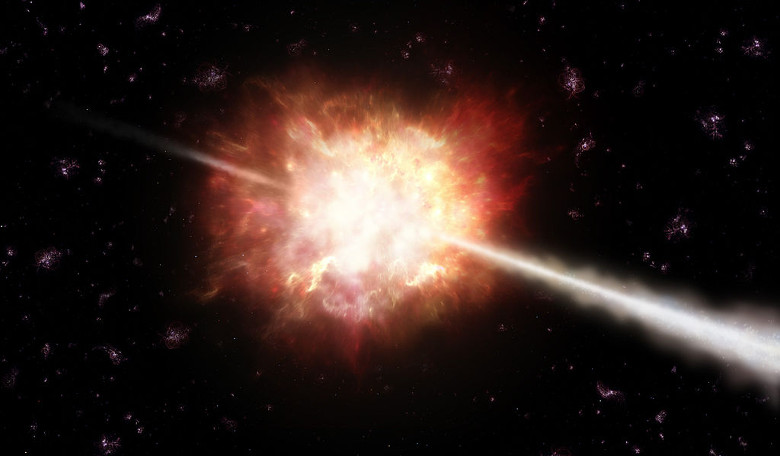A new type of highly energetic transient has been discovered by astronomers, which has now put into question other high energy events that have possibly been mistaken as something else.
In the last few years, all-sky surveys such as the Sloan Digital Sky Survey (SDSS) and the All-Sky Automated Survey for SuperNovae, have been busy finding high energy transient events that are so powerful, their exact nature cannot be agreed upon. Some have been suggested to occur from supernovae that are up to 100 times more energetic than typical explosions or from stars that are disrupted by a central supermassive black hole. However, there are also a few that are thought to originate in the innermost regions of their host galaxies, but what exactly created them is still under question.
This ambiguity might soon be turned on its head with the discovery of PS1-10adi – an event that the authors of a new research paper submitted to Nature Astronomy, say is the most energetic of these types of events to date.
Found using the Panoramic Survey Telescope and Pan-STARRS1 Survey, PS1-10adi is calculated to have an energy of 2.3 x 1052 ergs, which is the equivalent of 2.3 x 1045 Joules. As a comparison, in one second the Sun generates 3.8 x 1026 Joules of energy and the mass-energy emitted as gravitational waves during the merger of two black holes (originally about 30 solar masses each) as observed by LIGO was equivalent to 5.4×1047 Joules.
There is one type of phenomena that is capable of producing energy to this degree, however and that is Active Galactic Nuclei (AGN). AGN are the power houses at the centres of galaxies and they are thought to result from the accretion of matter by a residing supermassive black hole.
The international team of astronomers who discovered PS1-10adi have thus looked at whether AGN activity is behind this most powerful of events, but their analysis indicates that it is not. But they do acknowledge that, if PS1-10adi is due to a new type of AGN behaviour, “then the underlying physical mechanism remains to be identified, as do the relevant timescales.”
Instead, the team suggest that the properties of PS1-10adi, imply that the event is powered by shock interaction between expanding material and large quantities of surrounding dense matter.
What generated the expanding material is still not clear, but the team looked at whether a star being ripped apart by a black hole could be responsible or whether a supernova could describe their detection. Both of these could account for the energy released by PS1-10adi, and both would need some further explanation to account for the results, but if a tidally-disrupted star was to blame, then the team say that it would be a new and never seen before variant of this type of star.
But one of the most surprising aspects that the team found, was that PS1-10adi is not alone. After a search of databases to look for other transient events was conducted, the team discovered many more transients with characteristics that are remarkably similar to those of PS1-10adi.
So far, these transients have been linked to AGN activity, but the team, whose lead author is E. Kankare from Queen’s University Belfast, UK, say that this group is a distinct class of transients that have not been recognised, as such, until now.
However, it is likely that further clarification of these sources will have to wait until telescopes such as the Large Synoptic Survey Telescope and the Extremely Large Telescope start full science operation in 2023 and 2024 respectively. When this happens, the team suggest that hundreds of PS1-10adi-like outbursts will be discovered and systematic studies of this new population of nuclear transients can begin.











